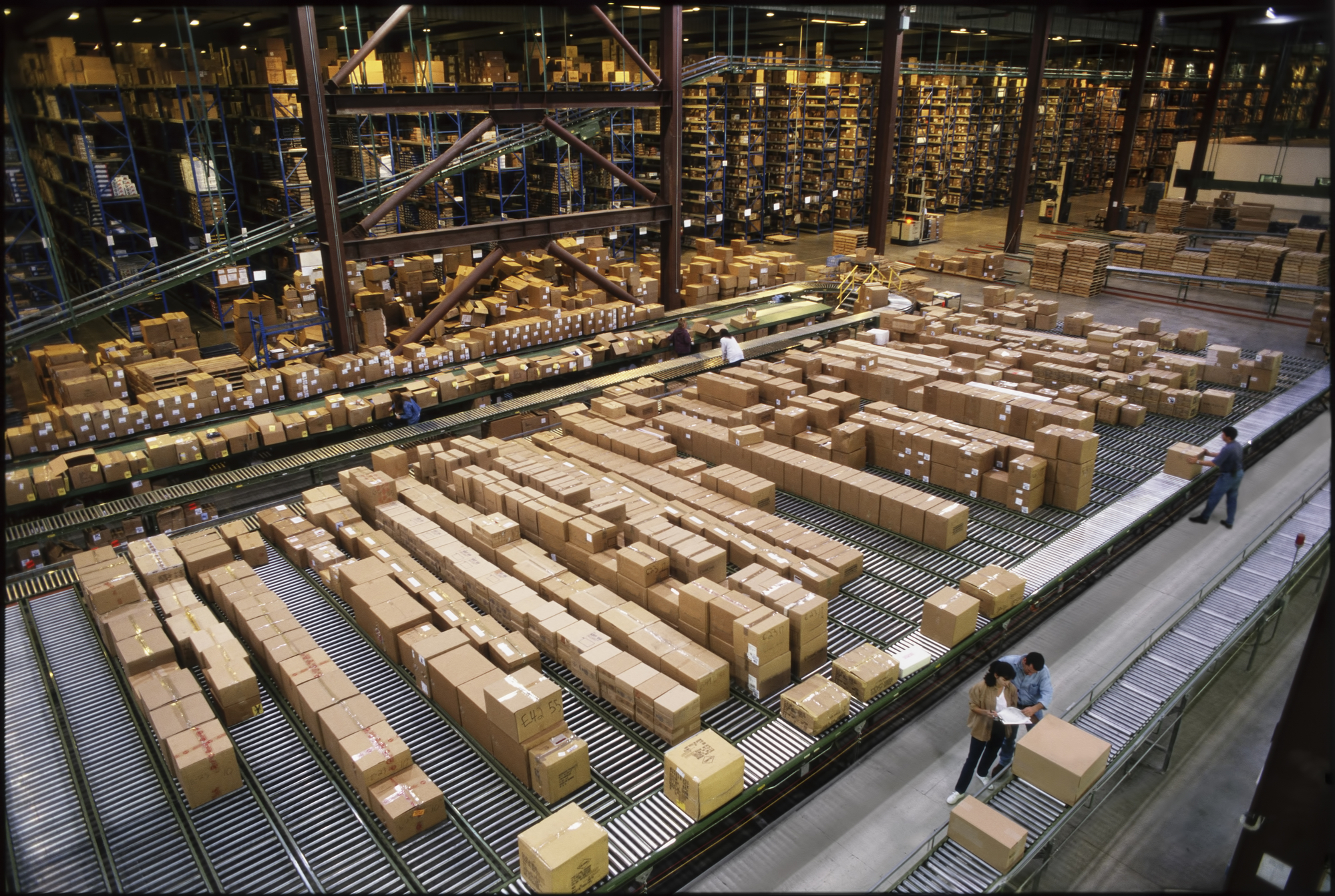Recession vs. Reinvention: Where does LTL go in 2025?
If one term could capture the state of LTL in 2025, it would be uncertainty. With tariffs, trade conflicts and fears of a recession unsettling an industry that has already navigated through a challenging freight environment, concerns about volatile economic shifts and potential worst-case outcomes are understandable. While the risk of a recession persists, most forecasts indicate that U.S. GDP will grow by 0.6 – 1.8% by the end of the year. How do we reconcile where we are currently with more optimistic estimates? For that, let’s examine driving factors and LTL carrier responses.
SMC³ recently hosted an exclusive webinar delving into seismic industry shifts, offering detailed insights into tariff, impacts, the state of play in the LTL market and manufacturing outlooks.
An Ongoing Freight Recession
Since early summer of 2022, a majority of analysts have alluded to an ongoing freight recession. That’s still true today, with carriers often reporting softness in volume and a deepening hesitancy from LTL shippers who were already prepping for a softer market.
That doesn’t portend a full market collapse. Instead, it’s likely to lead to a holding pattern as carriers tighten operations and brace for word from the Fed on rate adjustments. Shippers are mostly pausing orders, not canceling them-but the longer the pause, the greater the compounding effect for LTL carriers. Many are feeling the impact.
Amazon Wades into the LTL Market While FedEx Freight Prepares for its Solo Debut
Two huge players have entered the market with new versions of themselves: Amazon and FedEx Freight. This year, Amazon expanded its LTL services, allowing shippers to send partial loads and optimizing trailer space for inbound network orders. While this announcement initially was met with concern, most experts see Amazon’s LTL moves as a watch point, not necessarily a major market disruption.
Most see this move as Amazon simply streamlining its business by reducing LTL costs and complexity. Offering competitive, comprehensive LTL services and taking market share would require a years-long expansion. Some carriers even see potential upside, noting that Amazon’s internal shift could require external support while it builds necessary infrastructure.
Amazon isn’t the only shipper making changes. In 2026, FedEx Freight will uncouple from FedEx to instantly create the largest LTL and trucking operation in the U.S. This move was widely expected, as FedEx Freight has consistently outperformed other company segments on several KPIs, including an impressive operating margin near 20%.
While neither move poses an immediate threat to incumbent LTL providers, both are signs of broader shifts. Amazon’s technology-driven approach could eventually lead to more innovation in how freight is priced and moved. Meanwhile, FedEx Freight’s new independence could spur more aggressive competition and investment.
For now, established LTL carriers are watching closely and not sitting idly by as many LTL incumbents have recently built out their terminal network and added capacity through the sale of the Yellow LTL terminals. As one expert noted, this is more about Amazon and FedEx optimizing their core operations than upending the market overnight.
The Shift From Market Share to Profitability
One reason why many LTL carriers aren’t worried about these giants entering the space: profitability is more important than market share in the current landscape. Since the financial crisis of 2009, we’ve seen a majority of LTL carriers prioritize services and profitability over market share.
That strategy is working for carriers like Old Dominion Freight Line (ODFL), whose focus on service, profitable lanes, pricing and cost control has helped sustain profitability despite a softening market. The lesson? Carriers should consider holding firm, trusting their pricing power and continuing to sacrifice margin for marginal tonnage gains, especially as they have encountered an inflationary environment increasing the costs of labor and equipment. In fact, the most recent Operational Costs of Trucking Update from the American Transportation Research institute showed the LTL average total marginal costs excluding fuel rising from $1.73 to $2.00 per mile.
What’s Next for LTL Network Investments?
Over the past two years, LTL carriers pursued an opportunity for expansion by snapping up terminals, adding dock doors and investing in infrastructure to gain market share and strengthen networks. While opportunities still exist, market volatility has paused several more recent planned expansions/acquisitions, and many won’t open until long-term demand forecasts improve.
Expanding dock capacity beyond current needs can be seen as insurance for most LTL carriers. A rebound in freight volumes seems inevitable and suggests being ready with already-built capacity will be important.
What to Expect with Tariffs, Most Notably with China
Keith Prather, managing director for Armada Corporate Intelligence, believes that many phased agreements with U.S. trade allies are imminent. “South Korea, Japan, Vietnam, and the U.K.—basically 73% of U.S. imports—will get some kind of deal within the next 90 days,” Prather said on our April 29 webinar, “LTL Industry and Economic Outlooks.” The current tariff exemption pause in place for many countries, excluding China, is scheduled to end on July 9, 2025.
Clearly the largest trade and tariff issues center on China. While revised agreements may be coming soon with some countries, any new deals with China will likely take longer. Manufacturing has declined in recent months, with future bookings from China down 49% as of this webinar. Even after deals are struck, production and shipments will lag by weeks or months.
We typically see similar slowdowns in the weeks surrounding the Lunar New Year. This history could be a good indicator of how long a return to pre-tariff production levels will take. Additionally, it takes 4-6 weeks for a container ship to get from China to the U.S. which could lead to an additional two-month lag. That doesn’t just affect consumer goods, as manufacturing is the largest source of tonnage for LTL.
The Effects on Construction and Investment Signals
The construction industry is heavily reliant on a robust global supply chain and products from China. We will likely see a widespread impact in that industry for the rest of the year as it continues to grapple with projected tariffs.
Our experts found that targeted tariffs project to raise overall construction project costs between 11-15%. This could mean 15% of planned construction projects are delayed or cancelled altogether.
One caveat to this: if the U.S. were to impose a flat 10% universal tariff, the effect would be much smaller-perhaps just a 2.1-2.4% increase in overall project cost. A number that low would mean no delays or cancellations as the industry could absorb the small increases in costs and delivery times.
Nearshoring and the Momentum of Domestic Manufacturing
Nearshoring represents the most promising long-term opportunity for LTL carriers. Over the past two years, investments in domestic manufacturing have surpassed $235 billion annually-nearly four times pre-pandemic levels. The result will be meaningful but slow: a shift in production capacity ultimately will create LTL demand-but not for another two or three years. Reshored manufacturing operations, no longer dependent on bulk container ship loads, can switch to smaller, faster cycle LTL shipping options.
There are three core categories of manufacturing most likely to benefit from this cash injection: high-tech cleanroom production, national security sectors, food and pharmaceuticals, and critical industries, such as aerospace and defense. While those are essential markets, they tend to be limited by specialized equipment and skilled labor-none of which are easily scaled overnight. This will be an area to monitor and the answer for the labor issues might be found in the rise of autonomous operations.
What Comes Next? Watch the Treasury Rate
While 2025 presents economic uncertainty, there are signals of a potential upturn. One key to driving potential improvement is the 10-year Treasury rate. If it trends downward, it could trigger a cascade of investment in construction, automotive manufacturing and corporate expansion-areas that typically drive a substantial portion of LTL tonnage. Our experts see anything under 4% as the threshold when we may see some substantial changes.
Until then? A prudent path will likely be patient planning and investment in strategic flexibility-and prioritizing margin and profit over market share. The fundamentals of LTL strategy remain constant. When the market conditions improve, the carriers who remained disciplined will benefit.




